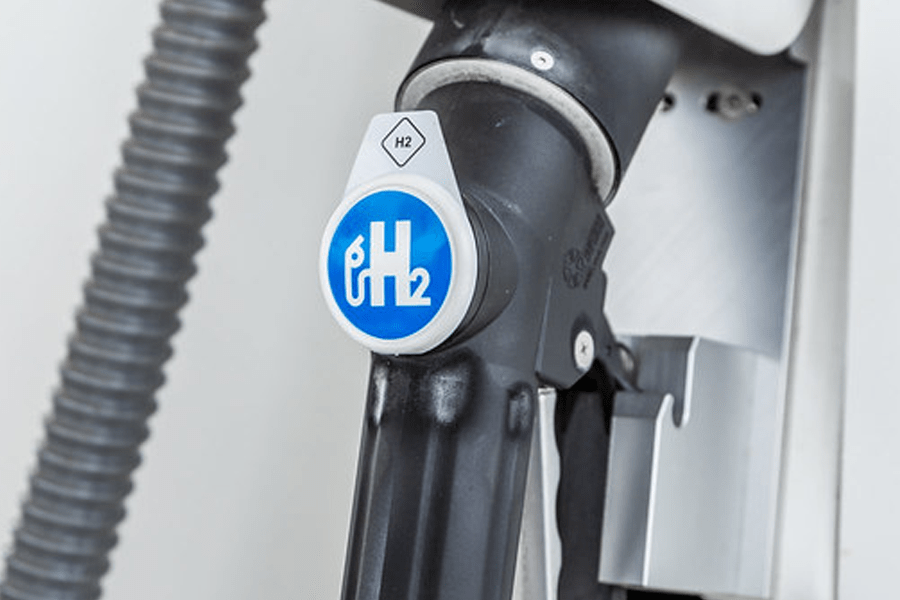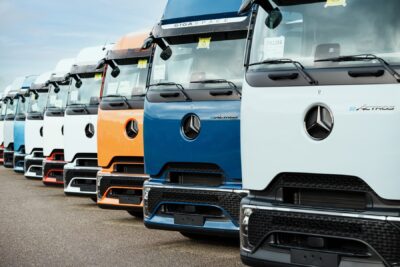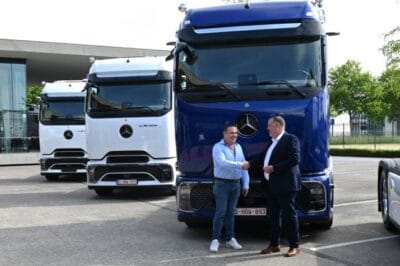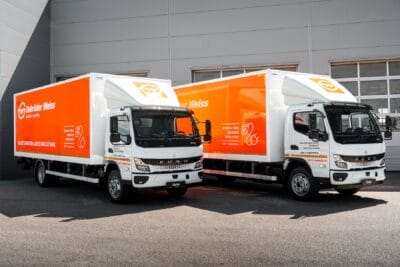H2 Mobility to increase hydrogen refuelling network
In Germany, the government-funded hydrogen filling station operator H2 Mobility has received an investment of 110 million euros to enable its next phase of growth. The primary investor is the French finance company Hy24. The expansion goals are accompanied by a focus on hydrogen-powered commercial vehicles of all sizes.
Hy24 is contributing 70 million euros, while the remaining 40 million euros will come from existing shareholders, which includes Air Liquide, Daimler Truck, Hyundai, Linde, OMV, Shell, and TotalEnergies. Hy24 is a merger of Ardian, Europe’s largest private investment house, and the investment fund FiveT Hydrogen. Their common goal is to scale up and thus commercialise hydrogen mobility by accelerating the expansion of filling stations.
H2 Mobility says that the new shareholder comes “just in time for the start of the market ramp-up of light and medium hydrogen commercial vehicles.” While H2 Mobility CEO Nikolas Iwan also sees the investment of an external financial investor as an “important confirmation of our course”.
Hy24 CEO Pierre-Etienne Franc explained in an interview with our German colleagues at electrive.net that: “We see great market potential in Germany and Europe, that’s why we are investing right now to continue the expansion in parallel with the market premieres of various hydrogen commercial vehicles.” He continued, “We are an independent investor and make our decisions on that basis. We are not an industrial company. With our financing, we pursue long-term, profit-oriented interests with effective impact in the energy transition.”
Hydrogen filling station capacity to be increased fivefold
The expansion plan that has just been made possible by this latest investment round envisages increasing the current number of just under 100 hydrogen filling stations in Germany to up to 300 by 2030. While these goals do not sound not particularly ambitious, these figures have a different background: H2 Mobility primarily wants to significantly increase the capacity of the sites. Instead of the previous 200 kilogrammes of hydrogen per day, the larger stations are designed for one tonne of H2. Since existing sites are also to be retrofitted, the tank capacity will increase significantly more than the expansion to 300 sites would suggest.
In addition, “selected existing sites are to be retrofitted as needed” with the 350-bar technology, which will allow trucks and buses to refuel there. However, the fuel cell cars that some of the earlier stations were geared towards operating at 700 bar. At many locations, both were possible, but at some, only 700 bar car refuelling was possible – since, in the past, H2 Mobility has been fixated on cars rather than hard-to-decarbonise sectors such as long-haul, heavy-duty transport.
“The focus at the moment is on hydrogen commercial vehicles, from vans to trucks,” says Iwan. “That’s why we are also retrofitting existing locations to also offer refuelling at 350 bar if it is not yet available. At the same time, we are keeping the door open for the passenger car sector.”
H2 fuel cell commercial vehicles or cars?
When the H2 Mobility managing director talks about fuel cell cars, he alludes primarily to BMW’s plans. According to information from mid-March, the company wants to cover “an increasing share in the drive mix” by hydrogen fuel cells from the second half of the decade. Currently, the iX5 Hydrogen is to go into small series production later this year. Possible production models with fuel cells from BMW have not yet been confirmed. The two other carmakers with fuel cell passenger cars, Hyundai and Kia, also currently have only one passenger car with the technology in their programme but use this same fuel cell technology (partly through cooperation agreements) in numerous commercial vehicles and hard-to-decarbonise applications.
To support large-scale production, BMW recently called for a denser network of 700-bar filling stations every 100 kilometres along the motorway by 2027 instead of every 150 kilometres. However, with a view to the vehicles announced in the near future, Alexander Iwan believes it is right to also spend money on 350-bar technology.
Which kind of fuel cell technology?
Incidentally, the fact that Daimler Truck, one of the shareholders in H2 Mobility, openly advocates the use of liquid hydrogen, i.e., hydrogen cooled to -253 degrees Celsius, instead of gas stored under pressure, does not worry Iwan. “It is a great advantage that Daimler Truck is one of our shareholders, so we are constantly in close exchange about different technologies and can react early,” says the managing director. Daimler is also setting its sights on conventional fuel cell technology. In spring of 2020, Daimler Truck and the Volvo Group announced a joint venture to develop and build fuel cells for heavy-duty commercial vehicles, while Daimler is manufacturing both battery-electric and hydrogen fuel cell trucks in its factory in Wörth.
For H2 Mobility, the new locations will certainly also close some gaps on the map, yet the company wants to focus primarily on regions with high demand. This should not only shorten the distances for companies with H2 vehicles in their fleets but, above all, offer reliability thanks to alternatives in the region since reliability is essential for corporate customers.
Reporting by Sebastian Schaal, Germany.
Additional sources via email.





0 Comments